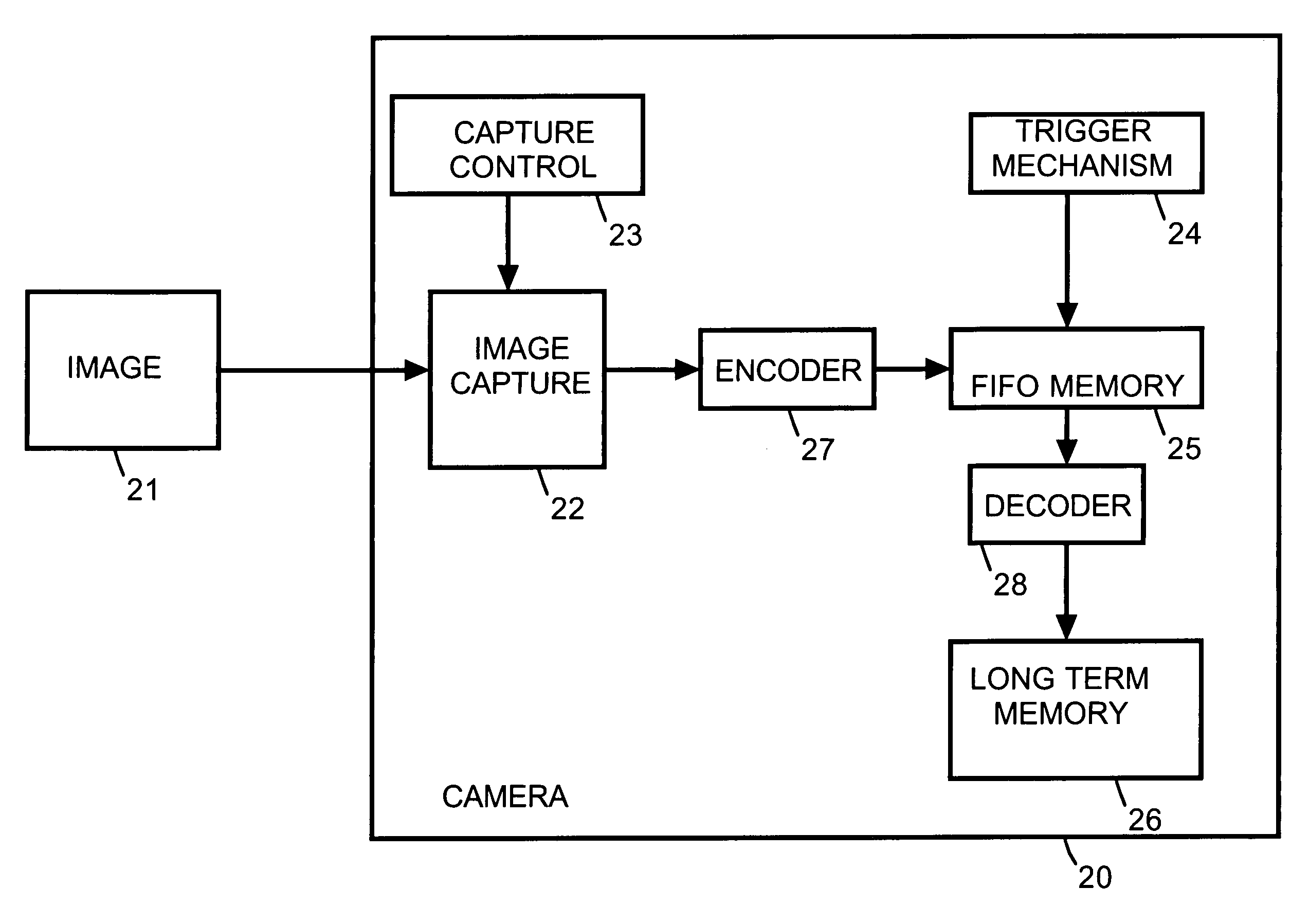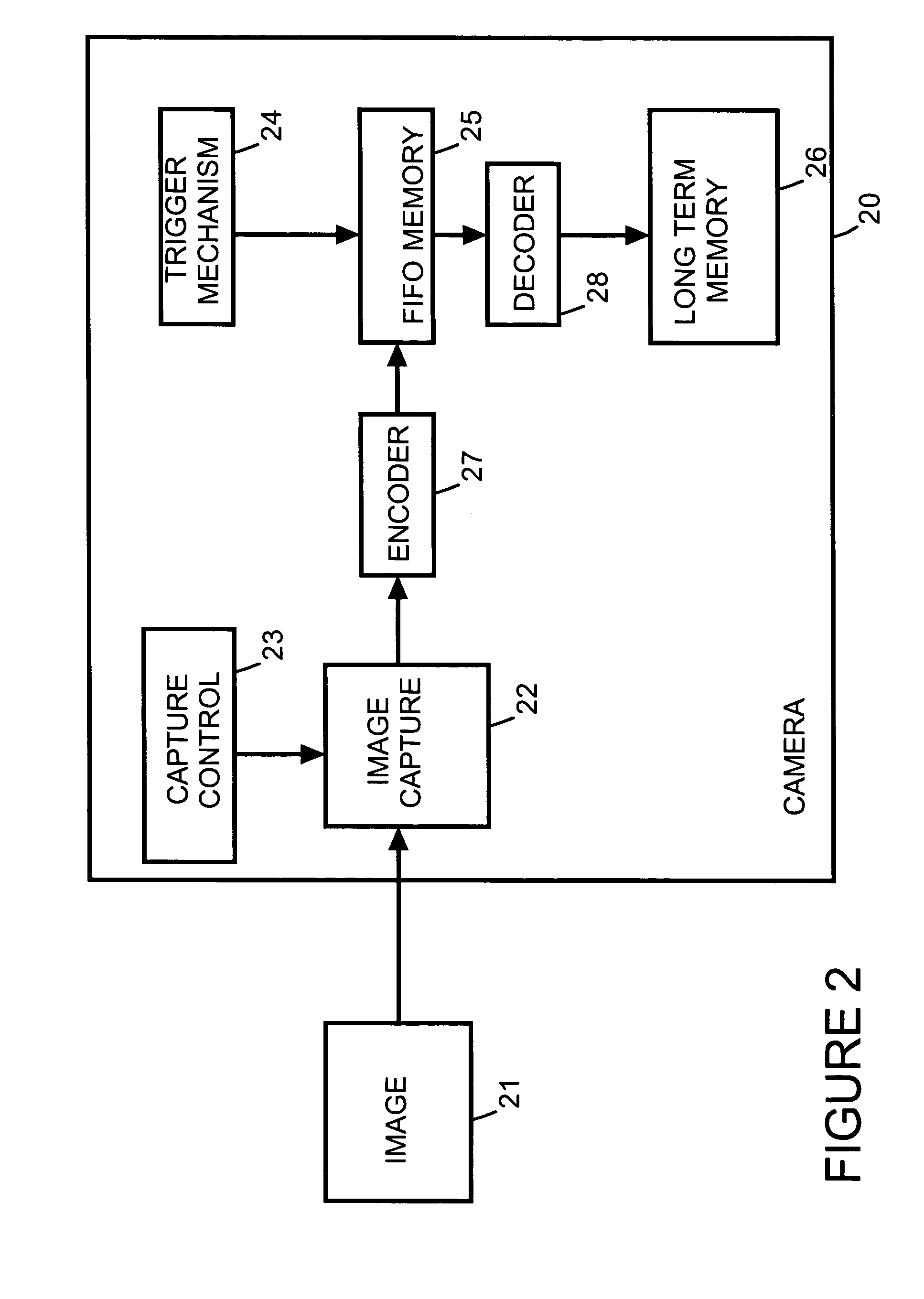First-in-first-out intermediate image storage
a technology of image storage and intermediate image, applied in the field of first-in-first-out intermediate image storage, can solve problems such as picture delay
- Summary
- Abstract
- Description
- Claims
- Application Information
AI Technical Summary
Problems solved by technology
Method used
Image
Examples
Embodiment Construction
[0009]FIG. 1 is a simplified functional block diagram of a camera 10. An image 11 is captured by an image capture block 12. Image capture block 12 includes, for example, lenses, a shutter, optical filters, motors that control the lenses, a charged coupled device (CCD) imager, an infrared focusing system, a microcontroller and / or other functional blocks typically associated with capturing images in digital cameras.
[0010]A capture initiation 13 directs image capture block 12 to begin capturing images. Each captured image is placed in a cyclic buffer arranged as a first-in-first-out (FIFO) memory 15. The maximum amount of images stored in FIFO memory 15 depends, for example, on the memory size of FIFO memory 15 and the memory size of captured images. For example, to store ten five-megabyte images requires FIFO memory 15 to have 50 megabytes of available storage. For example, to store one three-megabyte image requires FIFO memory 15 to have three megabytes of available storage.
[0011]A t...
PUM
 Login to View More
Login to View More Abstract
Description
Claims
Application Information
 Login to View More
Login to View More - R&D
- Intellectual Property
- Life Sciences
- Materials
- Tech Scout
- Unparalleled Data Quality
- Higher Quality Content
- 60% Fewer Hallucinations
Browse by: Latest US Patents, China's latest patents, Technical Efficacy Thesaurus, Application Domain, Technology Topic, Popular Technical Reports.
© 2025 PatSnap. All rights reserved.Legal|Privacy policy|Modern Slavery Act Transparency Statement|Sitemap|About US| Contact US: help@patsnap.com



